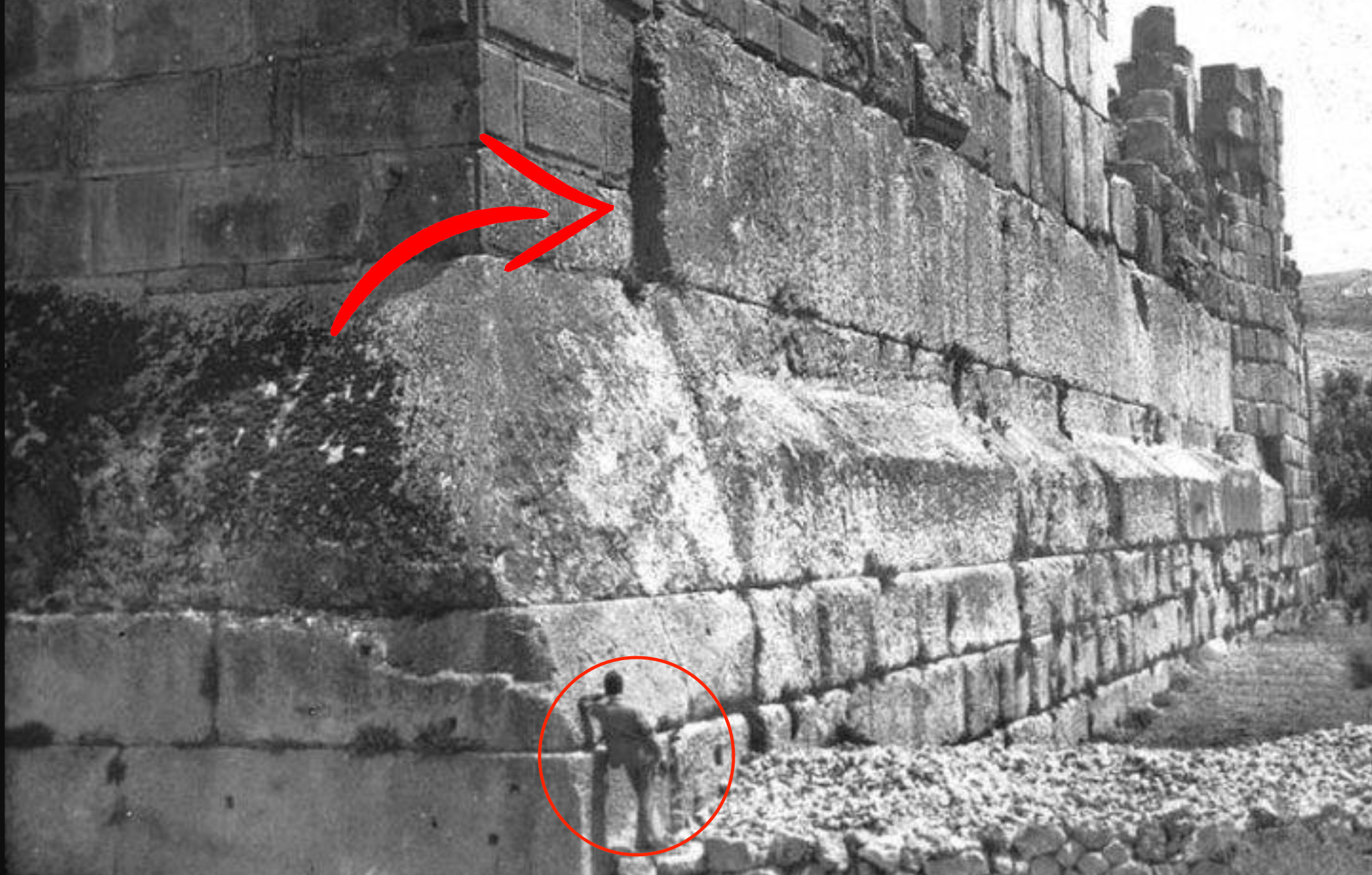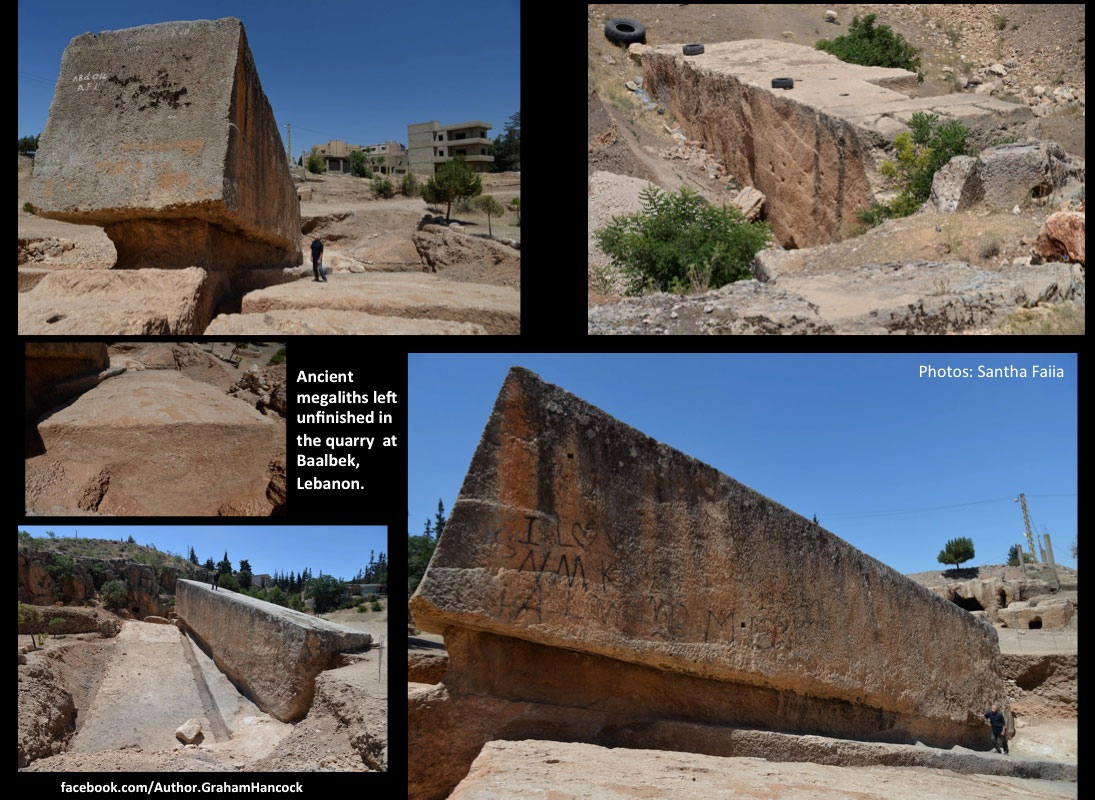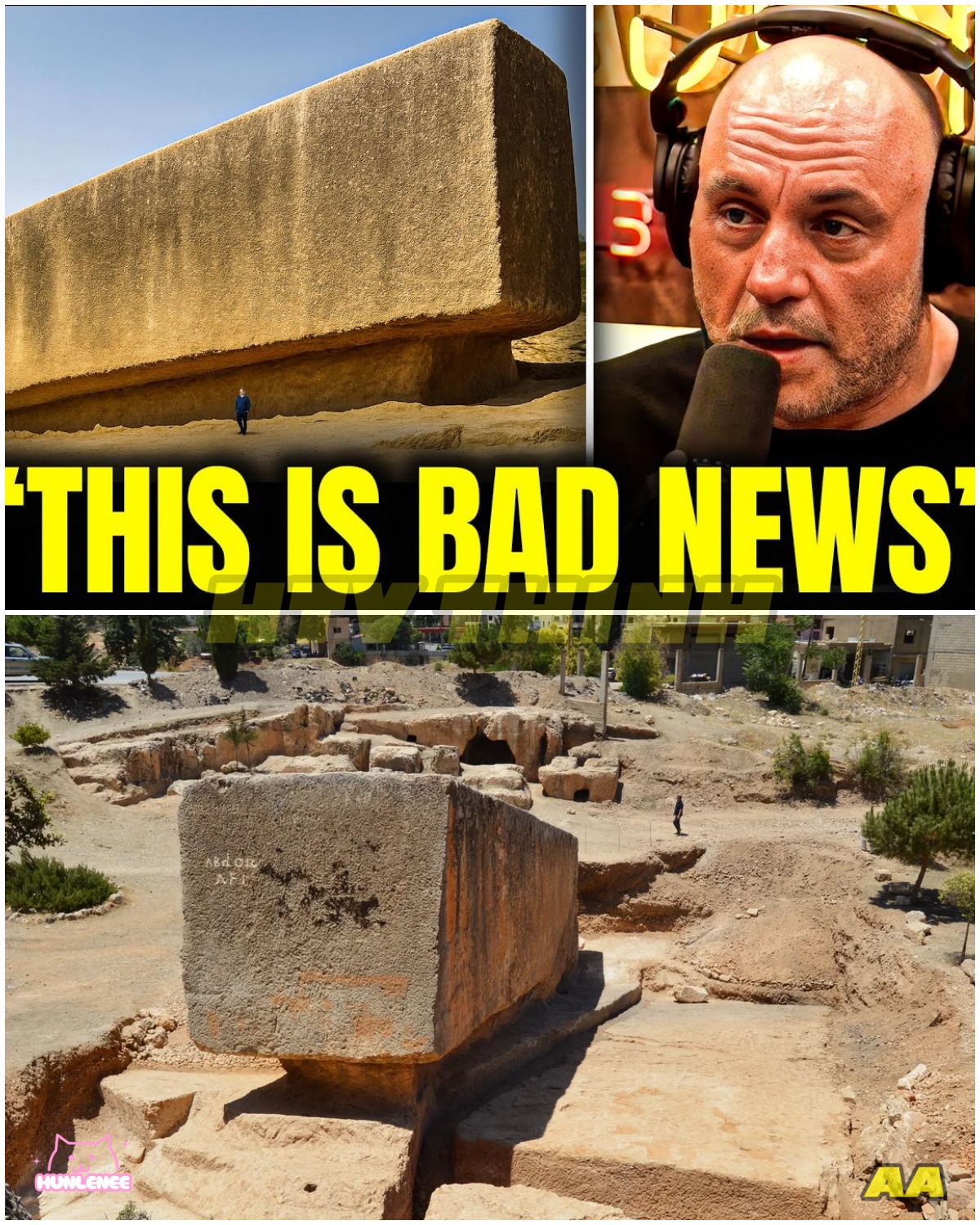Hidden within the rugged Beqaa Valley of Lebanon stands Baalbek, an ancient site that has defied explanation for centuries. Once known as Heliopolis, or “City of the Sun,” Baalbek’s ruins are home to some of the largest stone blocks ever quarried and moved by human hands—each weighing hundreds, even thousands, of tons. Their sheer scale, precision, and enduring mystery have made Baalbek one of archaeology’s most debated sites, and recent studies have only deepened the intrigue.
Colossal Stones, Timeless Questions

At the heart of the Baalbek complex lies the Temple of Jupiter, built during the Roman Empire atop a foundation that predates it by centuries. Beneath the temple’s grand columns rest the so-called Trilithon stones—three massive limestone blocks, each weighing around 800 tons, fitted together with uncanny precision. Nearby, archaeologists have identified even larger stones, including one that weighs 1,650 tons, the largest known quarried block from antiquity.
For generations, scholars and engineers have puzzled over how such immense stones could have been moved and aligned so perfectly. Without cranes, pulleys, or modern machinery, ancient builders would have needed exceptional ingenuity — and a deep understanding of physics and materials.
Unearthing Clues Beneath the Ruins

Recent excavations led by the German Archaeological Institute have revealed new insights into the site’s construction. Beneath the visible temples, researchers uncovered underground chambers and unfinished quarries, showing how workers gradually shaped and maneuvered the stones using a combination of ramps, levers, and counterweights.
What astonished experts was the precision of the cutting and fitting. Each block aligns so tightly that not even a sheet of paper can pass between them. These findings suggest that the builders of Baalbek mastered advanced techniques of stone extraction and transportation — long before the Roman Empire reached its height.
Magnetic readings and ground-penetrating scans have also revealed unexplored substructures beneath the main terrace, fueling speculation about earlier civilizations that may have occupied the site. While no evidence supports theories of lost or extraterrestrial technology, the complexity of Baalbek’s design hints at a long tradition of architectural innovation that transcended empires.
The Evolution of a Sacred City

Historically, Baalbek was a spiritual center that evolved across millennia. It began as a Canaanite sanctuary dedicated to Baal, later transformed by the Greeks into Heliopolis, and eventually expanded by the Romans, who constructed vast temples honoring Jupiter, Venus, and Bacchus.
The site’s engineering achievements reflected both religious devotion and imperial ambition. The Romans built Baalbek not only as a temple complex but as a symbol of human mastery over nature—an architectural statement meant to endure through the ages.
Modern Investigations and Ancient Ingenuity

Archaeologists studying Baalbek today emphasize that its construction, while extraordinary, falls within the realm of human capability. Using wooden rollers, sledges, manpower, and ingenious earthworks, ancient builders could have gradually shifted the monolithic stones from nearby quarries.
Dr. Jean-Pierre Adam, an architect and archaeologist who analyzed the site’s mechanics, demonstrated that the blocks could have been moved using friction-reducing clay and controlled inclines. “The feat of Baalbek,” he explains, “is not impossible—it’s a testament to the persistence and engineering intelligence of ancient craftsmen.”
Still, the precision of Baalbek’s alignments, the size of its stones, and the apparent absence of detailed construction records continue to provoke fascination. To many, Baalbek stands as a bridge between myth and history—a reminder that human ingenuity often borders on the miraculous.
The Legacy Beneath the Stones

As excavations continue, archaeologists are piecing together the story of how Baalbek was built—and why. The discovery of tool marks, ancient ramps, and quarrying techniques has helped debunk many myths, revealing a more human yet no less awe-inspiring reality. The “mystery” of Baalbek is not a lost civilization with advanced machinery, but the enduring brilliance of early engineers who combined mathematics, observation, and raw determination to create one of antiquity’s greatest architectural triumphs.
The megaliths of Baalbek challenge us not to underestimate our ancestors. They remind us that human innovation has deep roots, stretching back thousands of years—when faith, skill, and persistence could raise stones heavier than a modern airliner.
A Testament to Human Ambition

Today, Baalbek remains a UNESCO World Heritage Site and a living testament to the enduring spirit of human ambition. Its colossal stones continue to draw visitors, engineers, and dreamers alike—each trying to comprehend how a people from so long ago achieved what still seems impossible today.
The answer may not involve lost technologies or cosmic forces, but rather the relentless human drive to build, to worship, and to leave a legacy carved in stone.
